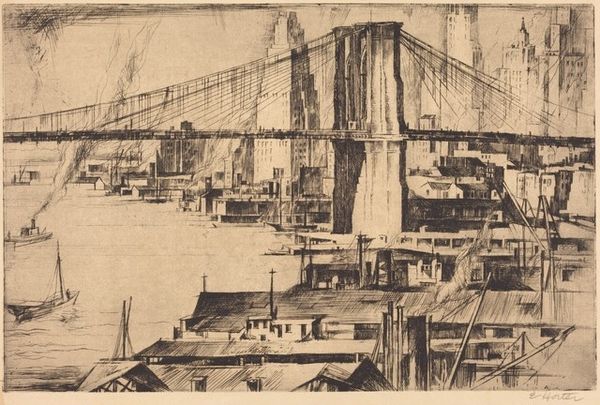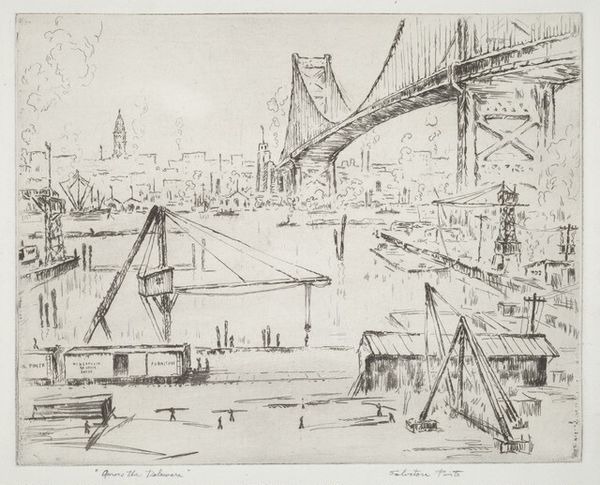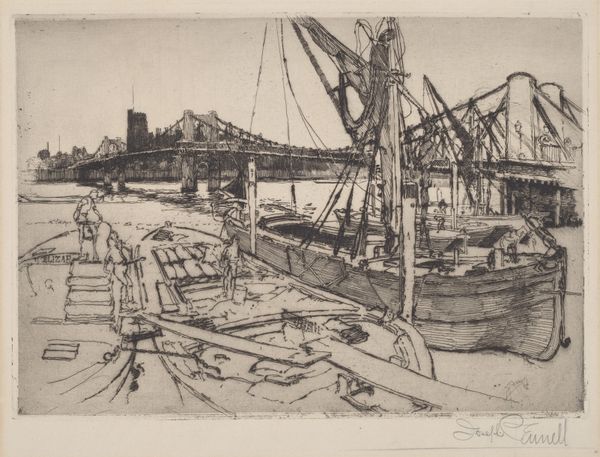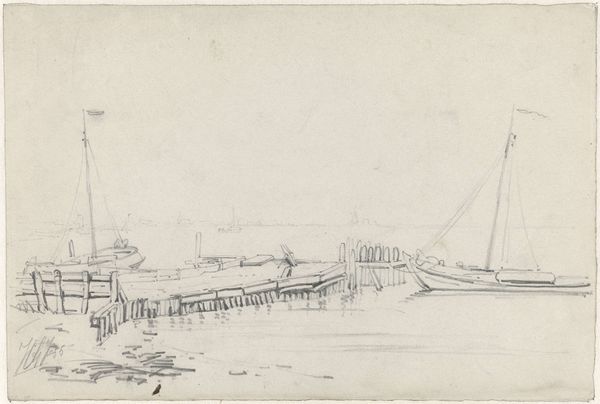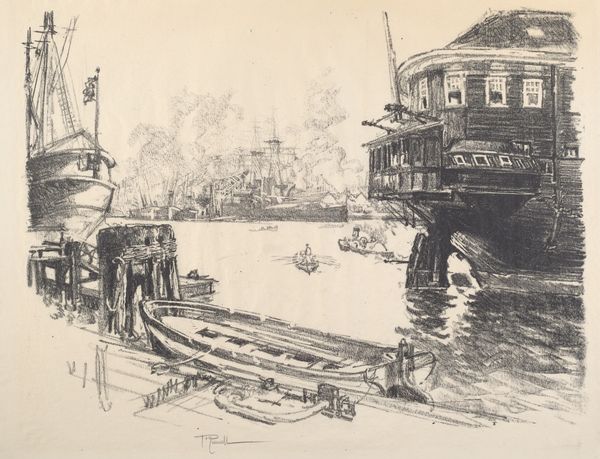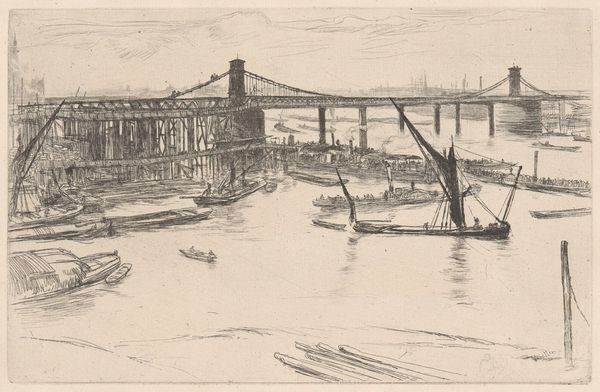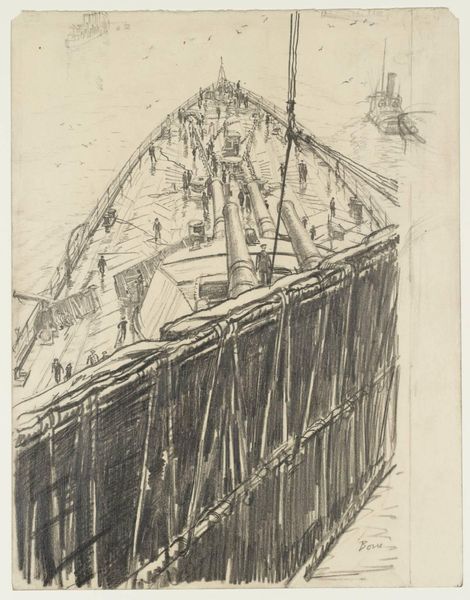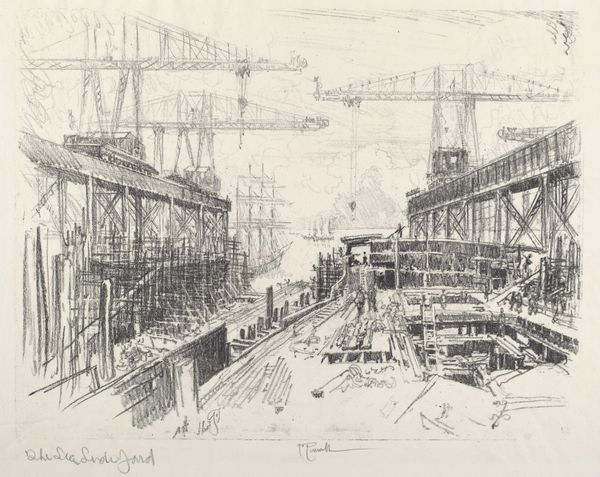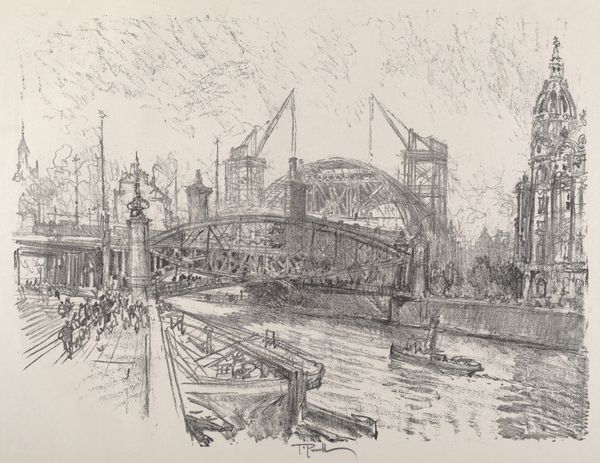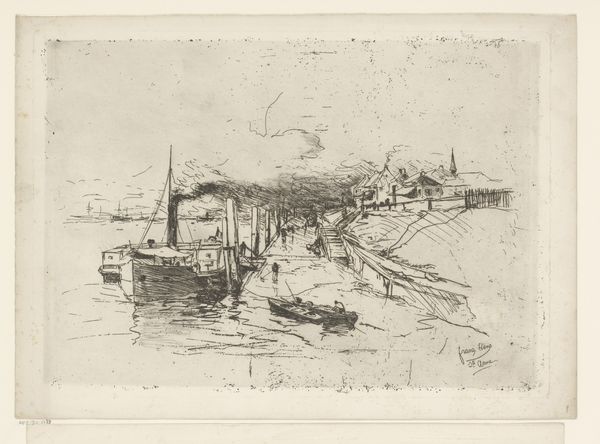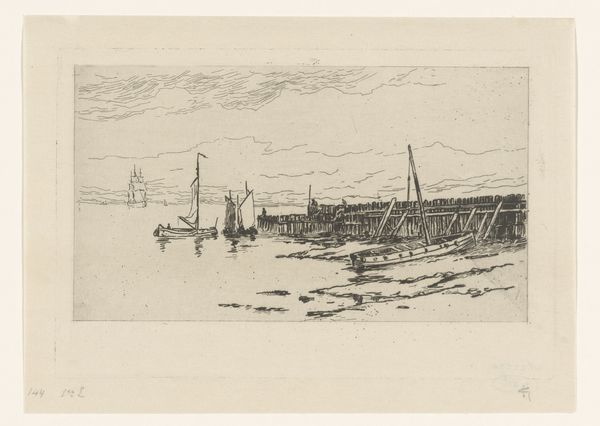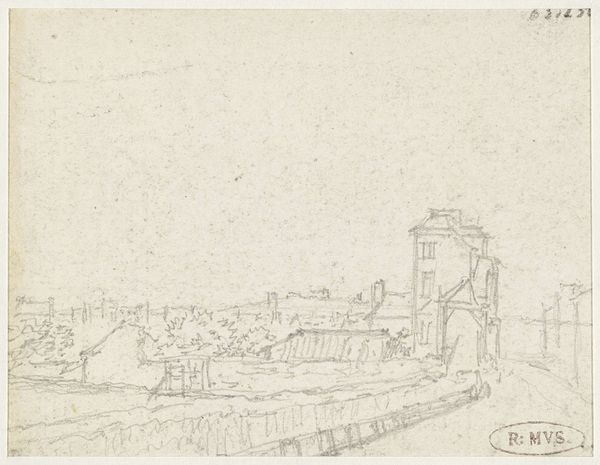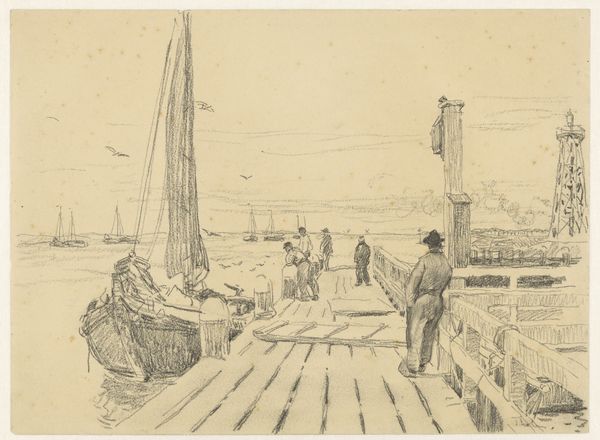
Dimensions: 10 3/16 × 14 7/8 in. (25.9 × 37.8 cm) (sheet)
Copyright: No Copyright - United States
Editor: Here we have Lucien Ott's "Boathouse Baths on the River Seine," created around 1905. It's a pencil drawing with etching, and the details are quite striking. It feels so calm, but there's a tension, too, in the contrast between the boats and the large suspension bridge behind them. How do you interpret this work? Curator: It strikes me as a commentary on the changing social fabric of Paris at the turn of the century. On one hand, you have these rather humble boathouses, suggestive of a more informal, perhaps even working-class, leisure. And on the other, the imposing bridge—a symbol of progress, industrialization, and connecting different parts of the city, and, perhaps, social classes. Notice the subtle way Ott positions the bridge so that it seems to loom over the boathouses. Do you see the implicit tension? Editor: I do, now that you point it out. It’s as if the old Paris, represented by the boathouses, is being overshadowed by the new, which is the bridge. Curator: Exactly! And what about the people who use the baths versus those who cross the bridge? These spaces became sites of intersection and sometimes of conflict between different social classes. We could even consider this in light of Haussmann's urban renewal projects. To what extent does this piece celebrate progress, and to what extent does it critique displacement and erasure? Editor: So, Ott isn't just showing us a scene; he’s making us think about who gets to enjoy the city and at what cost. I hadn't considered the social commentary before. Thank you. Curator: That’s right. It's about recognizing that every stroke, every compositional choice, can speak volumes about power dynamics and the lived experiences of different communities. Hopefully we can bring a similar awareness to every work we study from now on!
Comments
minneapolisinstituteofart almost 2 years ago
⋮
The French painter and draftsman Lucien Ott is best known for his landscapes and cityscapes. He favored views along the Seine and was particularly drawn to daily life on the river and quays. Here, he depicted a group of barges and houseboats at the foot of a suspension bridge. We might be looking at the small town of Triel-sur-Seine, 40 kilometers northwest of Paris. It opened public hot baths, or bains chauds, on a river barge in 1908, a rare luxury in the countryside during this period.
Join the conversation
Join millions of artists and users on Artera today and experience the ultimate creative platform.
